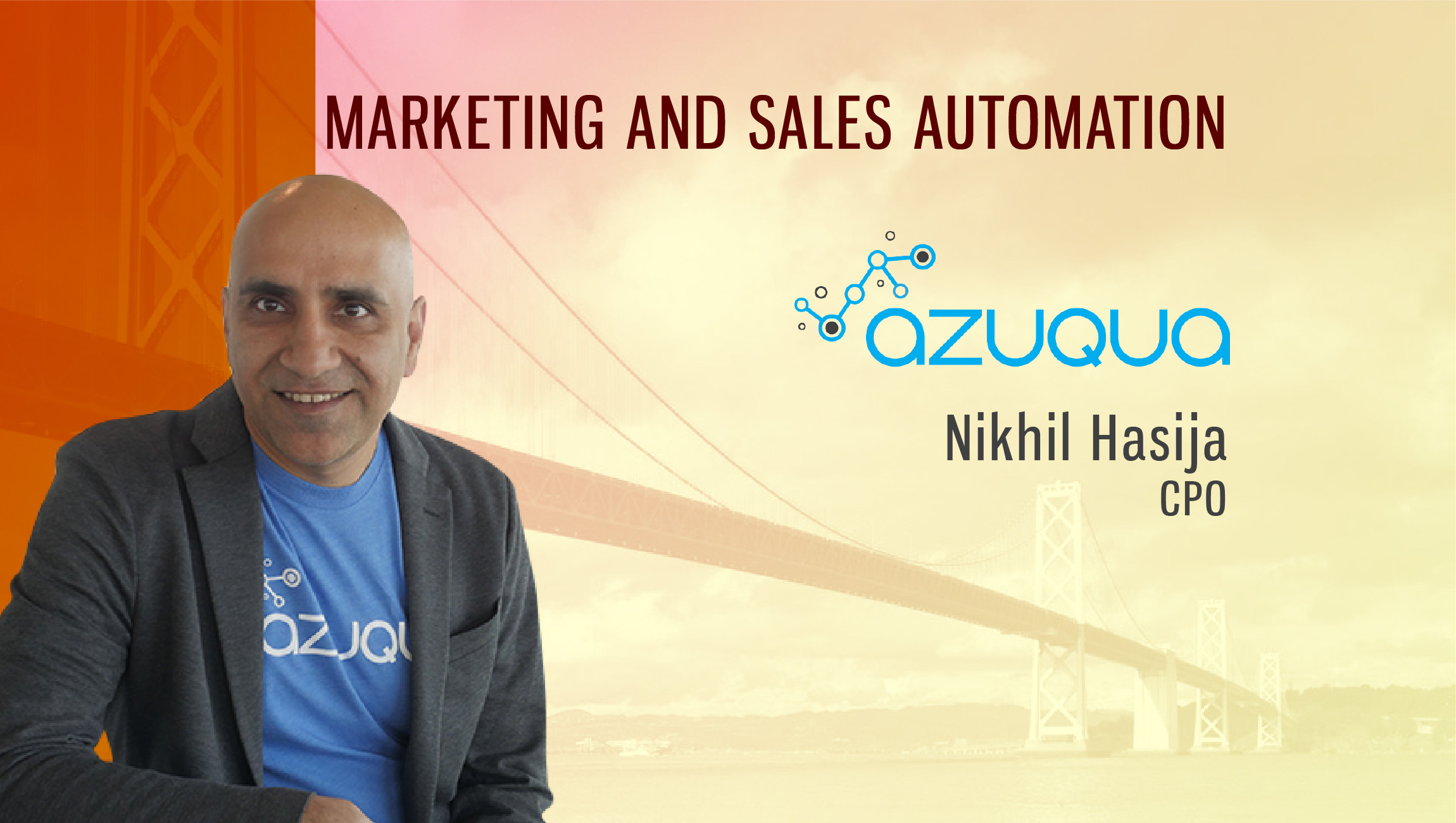Nikhil Hasija
Founder and Chief Product Officer, Azuqua
Are you coping with the surfeit of marketing automation tools in 2018? With so many loosely connected technologies on the offer, marketing teams have a hard time managing these. Nikhil Hasija, Founder and Chief Product Officer at Azuqua, spoke to us about on the dynamic growth of Customer Experience in an Automation ecosystem.
Html code here! Replace this with any non empty text and that's it.
Tell us about your role at Azuqua, and the team/technology you handle.
I am the founder and chief product officer at Azuqua. I’m responsible for setting the product vision/strategy, absorbing the voice of the customer and leading our product organization to deliver new capabilities and experiences based on that customer feedback.
What is the ‘State of Marketing Automation’ in 2018? How does Azuqua enable CMOs and their teams to sail the automation wave?
The wave of marketing automation tools that CMOs and their teams have adopted have delivered a ton of new capabilities but have also put marketing in a challenging position to manage and integrate hundreds of loosely connected applications. So today in 2018, the benefit of new SaaS tools solving specific use cases has been balanced by the integration challenge that having so many siloed systems creates.
How do you define Customer Experience in an Automation ecosystem?
At Azuqua, we think about customer experience in an automation ecosystem as the cohesiveness across all of the customer touchpoints. This includes the business processes and tools that directly touch the customer and the tools that are used to interface with them. In many ways, creating that cohesiveness across people, process and tools is why Azuqua exists – we are that glue that binds all of these items together.
What is the core technology driving Azuqua?
There are really three core technologies powering Azuqua:
- Self-Service Integration – Azuqua provides a rich process and workflow platform that enables organizations to consume and connect their disparate applications or microservices into higher value business process that drive competitive advantage for their business.
- Microservices Architecture – Azuqua is built on a microservices architecture that scales horizontally based on usage and demand in near real-time.
- High Scale Transaction Processing – Azuqua includes a scalable engine which can collect, process and transform large volumes of data and initiate processing anywhere on the cloud, from the edge all the way through to Azuqua’s cloud
Tell us about your recent app integrations with Adobe Analytics Cloud? How would it enable marketers to deliver a connected experience?
The integration with Adobe Analytics Cloud opens up a host of really compelling scenarios. Marketers will be able to connect with customers in real time across a number of fronts, email, messaging, sales and support personnel, etc. based on customer browsing behavior. Adobe triggers enable various workflows that span different apps corresponding to those touch points I just mentioned with Azuqua automating the cohesive experience for the customer.
How have Automation tools and technologies evolved to measure customer journey analytics?
Adobe adding triggers to analytics is one good example of this. Collecting data on the customer’s browsing/engagement behavior is one thing, but being able to kick-off specific actions based on triggers in the data is a big step forward.
Why do marketers still find it hard to attribute customer success to experience management? What are your recommendations to overcome these challenges?
Ultimately, I think this is a byproduct of the management of customer experiences being fragmented across different departments, processes and technology stacks. People have assumed the effort to connect all of this, making it a nearly impossible task and attribution around experience management impractical. My recommendation is to put the customer experience first, and really, I believe the CMO should own this effort across the company, and then leverage tools like Azuqua to break down the technological barriers that one thinks are holding them back.
How do you leverage AI/ML and data science at Azuqua?
We track everything in the product in terms of interaction and then based on user behavior, look to eliminate manual steps and provide users recommendations on functions and FLOs based on cohort analysis. This is a work in progress that we look forward to rolling out to our customers in the future.
What AI companies for in Marketing and Sales Automation are you particularly interested in—
I think DataRobot is doing some very interesting things in terms of making AI more actionable for a broader set of companies – would recommend checking them out!
Thanks for chatting with us, Nikhil.
Stay tuned for more insights on marketing technologies. To participate in our Tech Bytes program, email us at news@martechseries-67ee47.ingress-bonde.easywp.com











